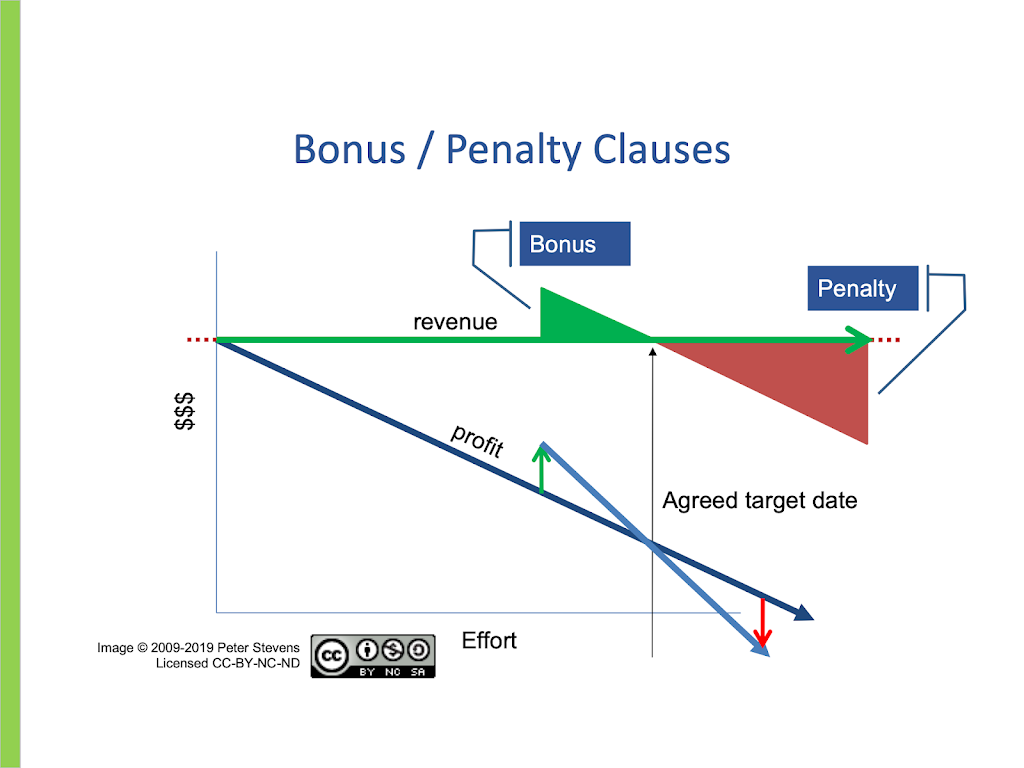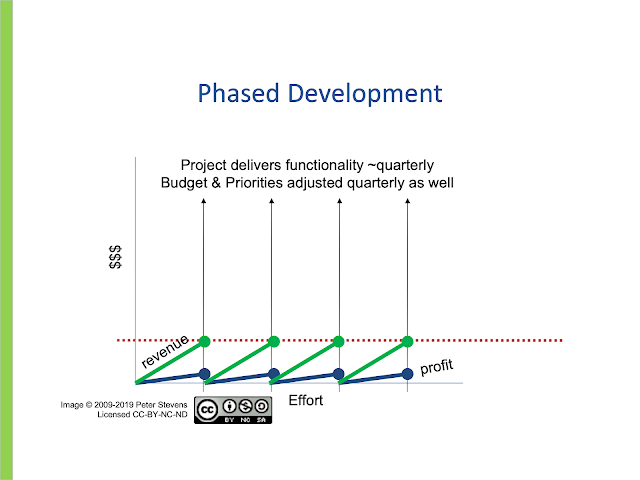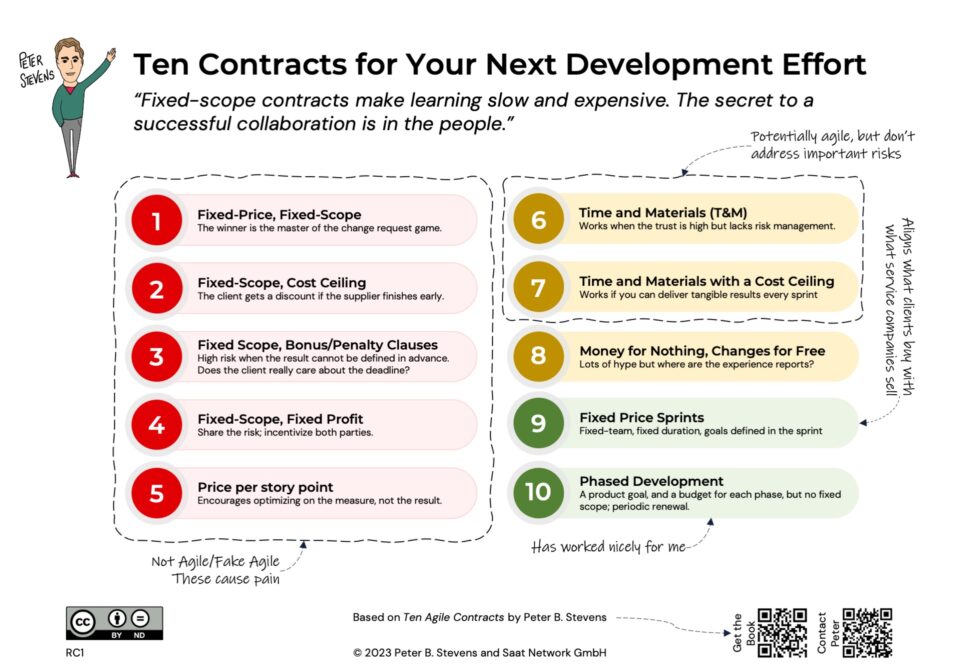Time and Materials with Variable Scope and a Cost Ceiling
11-06-2019
Bonus and Penalty Clauses
13-06-2019Phased development is essentially a longer-term perspective on Time and Materials with Variable Scope and Cost Ceiling, especially if each phase is kept relatively short, e.g. three months or so.
Desired Benefit
Enable decision-making within the project while maintaining control at the governance level over the costs.
Structure
Fund quarterly releases and approve additional funds after each successful release.
Scope Changes
Not explicitly defined by the model. Releases are in effect time-boxed. The knowledge that there will be another release next quarter makes it easier to accept postponing a feature to achieve the time box.
Risk
Customer’s risk is limited to one quarter’s worth of development costs.
Relationship
Cooperative. Both the customer and the supplier have an incentive that each release be successful so that additional funding will be approved.
Tips
Venture capitalists often work on this basis. A Release Train in SAFe could be handled this way. Phased Development represents a long-term view of Time and Materials with Variable Scope and Cost Ceiling. The budget is set and reviews on a quarterly basis. The Product Owner requests new budget from the governance level on a rolling basis, as the project goals are achieved.
I have worked quite happily under this model. We simply specified the Release goal, hourly rate and cost ceiling in the commercial contract. The customer provided the Product Owner. Everything else was determined in the sprint contracts.
This can be risky for the supplier, if the continuation doesn’t get approved how much notice or compensation do you get? See Section 7.9, Money for Nothing, Changes for Free for a scenario with a softer landing.





